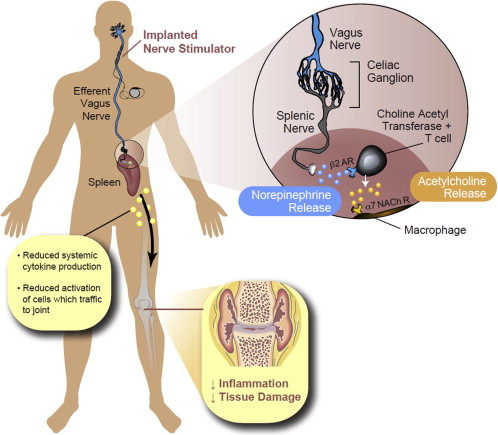People suffering from post-traumatic stress disorder (PTSD) often experience immense emotional and physical pain. A recent study conducted by researchers from the University of California, San Diego, found that functional MRI (fMRI) can be used to significantly reduce the pain. fMRI can be used for noninvasive vagus nerve stimulation which can considerably reduce the pain of PTSD patients.
It is a neuromodulation pain management technique whereby the spinal cord and dorsal root ganglion (DRG) is stimulated to reduce the physical as well as mental pain. Vagus nerve stimulation has been approved by the FDA as a treatment method for chronic headaches and severe migraines. The study shows how it can be effectively used for personalized treatments of post-traumatic stress disorder (PTSD).

Pain and the Vagus Nerve
A pain management specialist, Manuel Lerman, MD at UC San Diego Health and Veterans Affairs San Diego Healthcare System and his colleagues conducted the recent study to find a relation between emotional pain and the vagus nerve. The vagus nerve runs from the brainstem to the abdomen and is responsible for different body functions. It maintains breathing rate, heart rate, and digestive tract movement among other basic functions.
The researchers believe people with PTSD are more susceptible to pain when compared to others who are not suffering from the disorder. It may be associated with how their autonomic and sympathetic nervous systems process the feelings of pain. The fMRI can be successfully used to manage pain caused due to these changes in the nervous system.
Better Pain-Management
In order to test the pain-management technique, the researchers used fMRI of 30 participants. A painful heat stimulus was administered in all the participants. Before the procedure, 15 participants were treated with non-invasive vagus nerve stimulation for 2 minutes. Electrodes were used for nerve stimulation. The other half of the participants received a mock stimulation.
A sweat check on the participants’ skin was also conducted to find out how the sympathetic nervous system Reacted to pain. The heat was gradually increased and tested several times to note the different reactions. The researchers found that vagus nerve stimulation resulted in weakening the peak response to the heat in various parts of the brain associated with sensory, emotional and discriminatory pain processing. It also successfully delayed the pain response in these areas of the brain.
Final Results of the Study
In comparison to the control group, the pain-related regions of the brain were activated 10 seconds later in patients who were treated with vagus nerve stimulation. Their sweat response also decreased over time. The positive results from the study led Lerman to conclude that the outcomes may vary from one person to the other. Therefore, the frequency of vagus nerve stimulation has to be adjusted according to individual requirements. Lerman believes a personalized approach can be extremely beneficial.
sepStream® provides the best quality diagnostic imaging services. Our 100% web-based EMR/RIS/PACS solutions follow strict industry standards and are capable of meeting every client’s requirement. Choose our excellent solutions to digitize your workflow and experience a comprehensive and reliable service. We deliver web-based solutions which are easily accessible from anywhere, offering you complete peace of mind.